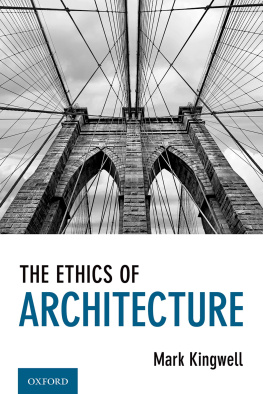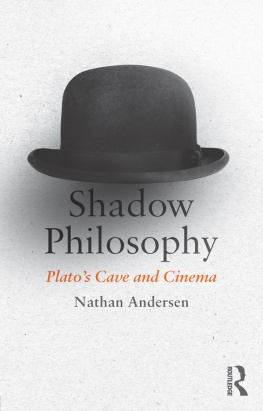WHAT ART IS
WHAT ART IS
ARTHUR C. DANTO

Copyright 2013 by Arthur Danto. All rights reserved. This book may not be reproduced, in whole or in part, including illustrations, in any form (beyond that copying permitted by Sections 107 and 108 of the U.S. Copyright Law and except by reviewers for the public press), without written permission from the publishers.
yalebooks.com/art
Designed by Nancy Ovedovitz and set in Scala type by Integrated Publishing Solutions. Printed in the United States of America.
Library of Congress Cataloging-in-Publication Data
Danto, Arthur C., 1924
What art is / Arthur C. Danto.
p. cm.
Includes bibliographical references and index.
ISBN 978-0-300-17487-8 (hard cover: alk. paper)
1. ArtPhilosophy. I. Title.
N66.D26 2013
700.1dc23 2012031606
A catalogue record for this book is available from the British Library.
This paper meets the requirements of ANSI/NISO Z 39.481992 (Permanence of Paper).
10 9 8 7 6 5 4 3 2 1
For Lydia Goehr
CONTENTS
PREFACE
It is widely accepted that Plato defined art as imitation, though whether this was a theory or merely an observation is difficult to say, since there was nothing else by way of art in Athens in his time. All that seems clear is that imitation in Plato meant pretty much what it means in English: looks like the real thing but isnt the real thing. But Plato was mainly negatively interested in art, since he was attempting to design an ideal societya Republic!and was eager to get rid of the artists on the grounds that art was of minimal practical use. In order to achieve this goal, he drew up a map of human knowledge, placing art at the lowest possible levelwith reflections, shadows, dreams, and illusions. These Plato regarded as mere appearances, a category to which belonged the kinds of things an artist knew how to make. Thus artists could draw a table, meaning that they knew how tables appear. But could they actually make a table? Not likelybut what good really was the appearance of a table? In fact, there was a conflict between art and philosophy, in that the writings of poets were used for teaching children how to behave. Plato felt that moral pedagogy should be left to philosophers, who used not imitations but reality in explaining the way things are.
In Book Ten of The Republic, Platos characterSocratessuggested that if you want to imitate, nothing could be better for that than a mirror, which will give you perfect reflections of whatever you aim the mirror at, and better than an artist can usually achieve. So lets get rid of the artists. The Greeks used texts like The Iliad pedagogically, to teach right conduct. But philosophers know the highest things, what Plato called ideas. Once the artists were out of the way, philosophers could teach and serve as rulers not susceptible to corruption.
In any case, no one can deny that art as practiced consisted in imitations or capturing appearances, to paraphrase modern art historians. How different from the present situation! I am very interested in how one approaches that topicWhat is Art, writes my friend the artist Tom Rose in a personal note. The question that comes up in every class and in every context. It is as if imitation disappeared, and something else took its place. In the eighteenth century, when aesthetics was invented or discovered, the thought was that art contributed beauty, hence gave pleasure to those with taste. Beauty, pleasure, and taste were an attractive triad, taken seriously by Kant in the early pages of his masterpiece, The Critique of Judgment. After Kantand Hume before himthere were Hegel, Nietzsche, Heidegger, Merleau-Ponty, and John Dewey, each delivering marvelous but conflicting theses. And then there were the artists themselves, with paintings and sculptures to sell in galleries and art fairs and biennials. Small wonder the question of what is art came up in every class and every context. Sowhat is art? What we know from the cacophony of artistic argument is that there is too much art that is nonimitational for us to read Plato except for the sake of his views. This was a first step. It was Aristotle who carried it much further, by applying it to dramatic presentationstragedies and comedieswhich he argued were imitations of actions. Antigone was the model of a wife, Socrates was not quite the model of a husband, and so on.
My thought is that if some art is imitation and some art is not, neither term belongs to the definition of art as philosophically understood. A property is part of the definition only if it belongs to every work of art there is. With the advent of Modernism, art backed away from mirror images, or, better, photography set the standard of fidelity. Its advantage over mirror images is that it is able to preserve images, though of course photographic images are liable to fade.
There are degrees of fidelity in imitation, so Platos definition of art remained in place, with little to argue about until it stopped capturing the seeming essence of art. How could this have happened? Historically it happened with the advent of Modernism, so this book begins with certain revolutionary changes that took place in France, mainly in Paris. Plato had had an easy run, from the sixth century BC until AD 19057, with the so-called FauvesWild Beastsand Cubism. In my view, to get a definition better than Platos you have to look to more recent artists, since they are most likely to subtract from their theories properties that were earlier thought to be essential to art, like beauty. Marcel Duchamp found a way of eradicating beauty in 1915, and Andy Warhol discovered that a work of art could exactly resemble a real thing in 1964, though the great movements of the 1960sFluxus, Pop Art, Minimalism, and Conceptual Artmade art that was not exactly imitation. Oddly, sculpture and photography shifted the center of artistic self-awareness in the seventies. After that, everything was feasible. Anything went, leaving it uncertain whether a definition of art is any longer possible. Anything cannot be art.
The first and longest chapter may feel like art history, but it is not. It was basically decided by leading aestheticians that art was indefinable, since there is no overarching feature. At best, art is an open concept. My view is that it has to be a closed concept. There must be some overarching properties that explain why art in some form is universal.
It is true that art today is pluralistic. Pluralism was noticed by certain followers of Ludwig Wittgenstein. What makes art so powerful a force as it appears to be in song and story is due to what makes it art to begin with. There is really nothing like it when it comes to stirring the spirit.
I have tried, using Duchamp and Warhol to achieve my definition of art, to outline examples from the history of art to show that the definition always has been the same. Thus I use Jacques-Louis David, Piero della Francesca, and Michelangelos great ceiling for the Sistine Chapel. If one believes that art is all of a piece, one needs to show that what makes it so is to be found throughout its history.
WHAT ART IS
CHAPTER ONE
WAKEFUL DREAMS
Early in the twentieth century, beginning in France, the visual arts were revolutionized. Up until that point, theywhich, unless otherwise indicated, I shall simply designate arthad been dedicated to copying visual appearances in various media. As it turned out, that project had a progressive history, which began in Italy, in the time of Giotto and Cimabue, and culminated in the Victorian era, when visual artists were able to achieve an ideal mode of representation, which the Renaissance artist Leon Battista Alberti, in his
Next page








